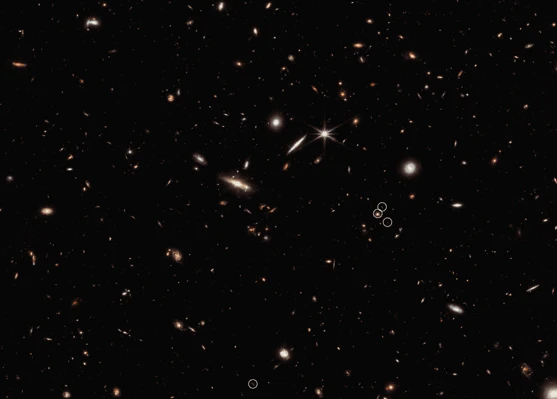Ever since humans first gazed at the night sky, we have been captivated by the mysteries of the universe. Among the most enigmatic phenomena in the cosmos are black holes and the cosmic web. The cosmic web is a complex network of structures comprising galaxies, galaxy clusters, and vast cosmic filaments that span across the universe. On the other hand, black holes are celestial objects with gravitational forces so strong that nothing can escape their grasp, including light. In this article, we will explore the interplay between black holes and the cosmic web, their role in the formation and evolution of galaxies, and the methods scientists use to observe and study these enigmatic phenomena. By delving into the depths of the universe and unraveling its secrets, we hope to deepen our understanding of the structure and origins of the cosmos.
Contents
- The Concept of the Cosmic Web
- Black Holes: The Most Mysterious Objects in the Universe
- Interplay Between Black Holes and the Cosmic Web
- The Role of Supermassive Black Holes in the Cosmic Web
- Observing Black Holes and the Cosmic Web
- The Future of Studying Black Holes and the Cosmic Web
- Conclusion
-
Frequently Asked Questions
- 1. What is the cosmic web made of?
- 2. How was the cosmic web formed?
- 3. What holds the cosmic web together?
- 4. Are all galaxies part of the cosmic web?
- 5. What role does the cosmic web play in galaxy formation?
- 6. Can we see the cosmic web?
- 7. How are black holes related to the cosmic web?
- 8. Are black holes found at every intersection of the cosmic web?
- 9. Can the cosmic web affect cosmic expansion?
- 10. What can studying the cosmic web teach us about the universe?
- References
-
Frequently Asked Questions
- 1. How do black holes form within the cosmic web?
- 2. What is the gravitational influence of black holes on the cosmic web?
- 3. Can black holes impact the formation of galaxies within the cosmic web?
- 4. How can we detect and study black holes?
- 5. What are some techniques used to probe the cosmic web through large-scale surveys?
- 6. What role do supermassive black holes play in the cosmic web?
- 7. How does the accretion of matter by supermassive black holes contribute to the cosmic web?
- 8. Can studying black holes provide insights into galaxy formation and evolution?
- 9. What does the future hold for the study of black holes and the cosmic web?
- 10. Why are black holes considered the most mysterious objects in the universe?
- References
- Read More
The Concept of the Cosmic Web
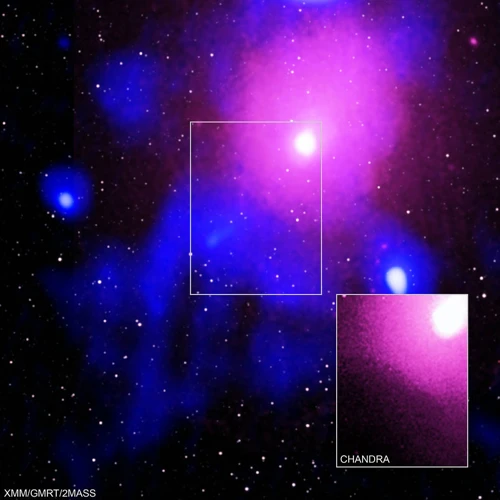
The concept of the cosmic web is a fundamental framework that helps us understand the large-scale structure of the universe. It visualizes the distribution of matter in the cosmos, revealing a web-like pattern of interconnected filaments and voids. The cosmic web is formed through a process called gravitational collapse, where the gravity of dark matter pulls matter together to form dense regions known as galaxy clusters. These clusters are interconnected by long, thread-like filaments made up of gas, dust, and galaxies. The vast cosmic web stretches billions of light-years across the universe, shaping the distribution of galaxies and influencing their formation and evolution. It is through the cosmic web that galaxies are connected and influenced by the forces of gravity, gas flows, and cosmic feedback. The concept of the cosmic web has revolutionized our understanding of the universe, providing a framework to explore the large-scale structure and evolution of the cosmos. By studying this intricate cosmic tapestry, scientists gain insights into the origins, growth, and interconnectedness of galaxies and the cosmic structure as a whole. (source: impact-asteroids-comets-earth-history-article)
Black Holes: The Most Mysterious Objects in the Universe
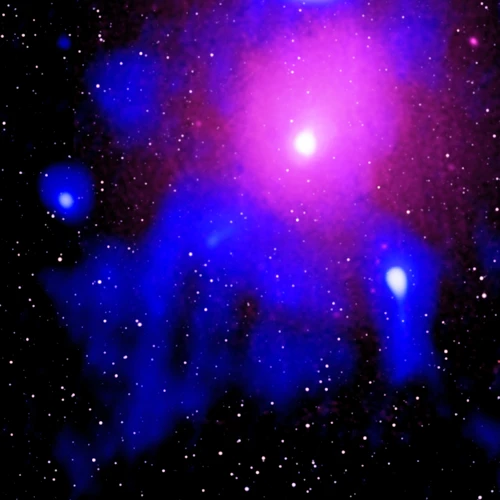
Black holes, the most mysterious objects in the universe, are celestial entities that continue to intrigue and baffle scientists and astronomers alike. These cosmic enigmas are formed from the remnants of massive stars that have undergone gravitational collapse. What makes black holes so intriguing is their extraordinary gravitational pull, so strong that nothing, not even light, can escape its grasp. This phenomenon is known as the event horizon, a boundary beyond which no information can be obtained. Black holes come in different sizes, ranging from stellar black holes to supermassive black holes that reside at the centers of galaxies. The properties of black holes, such as their mass and spin, are governed by their event horizons. As matter falls into a black hole, it forms an accretion disk, generating incredible amounts of heat and radiation. This process can sometimes lead to the emission of powerful jets of particles and radiation known as relativistic jets. While we cannot directly observe black holes, scientists study the effects they have on their surroundings, such as the distortion of light and the influence they exert on neighboring objects. Despite the many unanswered questions and mysteries surrounding black holes, their presence in the universe plays a vital role in shaping the cosmic landscape. (source: comet-impact-earth)
Interplay Between Black Holes and the Cosmic Web
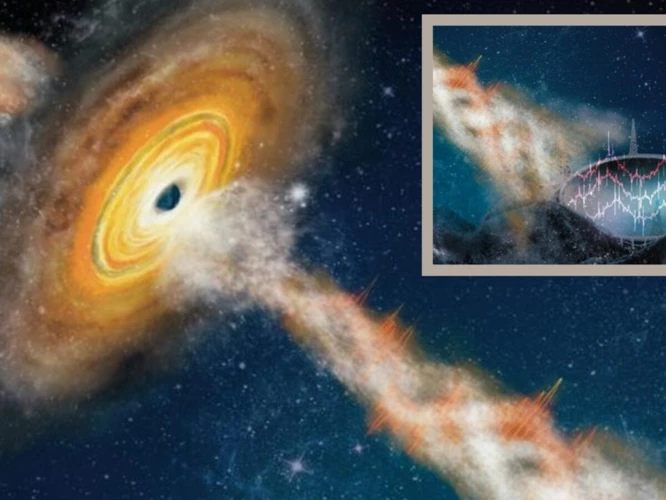
The interplay between black holes and the cosmic web is a fascinating and intricate relationship that shapes the structure and evolution of the universe. Black holes, with their immense gravitational forces, play a crucial role in influencing the cosmic web. Their gravitational pull affects the surrounding matter, causing it to clump together and form galaxies and galaxy clusters along the cosmic filaments. This gravitational influence extends not only to nearby structures but also to the overall distribution of matter in the cosmic web. The presence of black holes can also disrupt the delicate balance of the cosmic web through processes like accretion and feedback. Accretion occurs when black holes attract surrounding matter, causing it to spiral inward and release powerful energy in the form of jets and radiation. This process can impact the surrounding cosmic filaments, altering the gas density and influencing the formation of new stars and galaxies. Additionally, black hole feedback, such as strong winds and outflows, can inject energy into the cosmic web, regulating the growth of galaxies and balancing the cosmic ecosystem. The interplay between black holes and the cosmic web is a dynamic and complex dance that shapes the structures we observe in the universe, linking the smallest scales of black hole physics to the grand cosmic architecture. (source: /decoding-birth-chart-guide-understanding-natal-astrology/)
1. Gravitational Influence on the Cosmic Web
The gravitational influence on the cosmic web is a key factor in shaping its structure and evolution. Gravity acts as the driving force that governs the formation and arrangement of matter within the cosmic web. The immense gravitational pull of dark matter, a mysterious and invisible substance, plays a crucial role. Dark matter provides the scaffolding upon which galaxies and galaxy clusters form. Over time, the gravitational attraction of dark matter causes gas and dust to accumulate in dense regions, eventually giving birth to galaxies. As galaxies form and grow, they continue to interact with the gravitational field of the cosmic web, shaping their distribution and dynamics. The gravitational influence of the cosmic web also affects the motion and interactions of galaxies within their clusters, as well as the exchange of gas and matter between galaxies. This gravitational dance dictates the large-scale structure of the cosmic web, with galaxies connected by the gravitational interactions that stretch across these vast cosmic filaments. Understanding the gravitational influence on the cosmic web is vital in deciphering the mechanisms that drive the formation and evolution of the universe on the largest scales. (source: impact-asteroids-comets-earth-history-article)
2. Formation and Evolution of Black Holes within the Cosmic Web
The formation and evolution of black holes within the cosmic web is a fascinating process that plays a crucial role in shaping the universe as we know it. Black holes are believed to form through the collapse of massive stars, creating incredibly dense regions in space where gravitational forces are overwhelmingly strong. As these black holes form and grow, they interact with the cosmic web and have a profound influence on its evolution.
1. Black Hole Formation: When a massive star exhausts its nuclear fuel, it undergoes a catastrophic collapse. The core implodes under its own gravity, leading to the formation of a stellar black hole. This newly formed black hole retains the mass of the original star but is compressed into a singularity with zero volume and infinite density.
2. Black Hole Growth: Black holes can continue to grow in size through two primary mechanisms: accretion and mergers. Accretion occurs when a black hole pulls in surrounding matter, such as gas and dust, through its powerful gravitational pull. As the matter falls into the black hole’s event horizon, it forms an accretion disk that releases an enormous amount of energy in the form of radiation and jets of high-speed particles. Black holes can also grow by merging with other black holes or through the accretion of smaller black holes.
3. Black Holes and Galaxy Evolution: The presence of black holes within the cosmic web has significant implications for the evolution of galaxies. Black holes can release energy through powerful outflows and jets, which can inhibit or enhance star formation within their host galaxies. These energetic processes, known as feedback, play a crucial role in regulating the growth of galaxies and shaping their properties.
4. Interactions with the Cosmic Web: As black holes grow, they interact with the cosmic web in various ways. They can gravitationally influence the surrounding matter by bending space-time, causing the gas and dust in the cosmic filaments to flow towards them. The intense gravitational pull of black holes can also trigger the formation of stars, fostering the growth of galaxies within the cosmic web.
The formation and evolution of black holes within the cosmic web represent a complex and interconnected process that intertwines the growth of massive objects with the structure and dynamics of the universe. Understanding these processes is vital for unraveling the mysteries of the cosmos and comprehending the intricate cosmic tapestry that surrounds us.
The Role of Supermassive Black Holes in the Cosmic Web
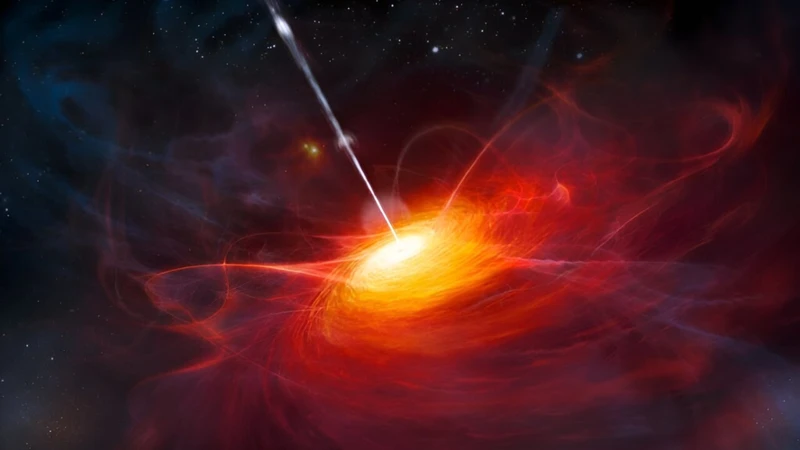
Supermassive black holes, as their name suggests, play a pivotal role in the cosmic web. These behemoth cosmic entities, with masses millions or even billions of times greater than that of the Sun, reside at the centers of galaxies, including those within the cosmic web. One of the key roles of supermassive black holes is their interaction with surrounding matter through a process known as accretion. As matter falls into the gravitational well of a black hole, it forms an accretion disk, releasing immense amounts of energy in the form of radiation. This process can have a profound impact on the surrounding cosmic web, as the intense radiation emitted by black holes can heat and ionize intergalactic gas, affecting its distribution and evolution. Additionally, black hole feedback, powered by the strong gravitational forces and energetic particle jets, can regulate star formation and expel gas from galaxies, influencing their growth and development within the cosmic web. The interplay between supermassive black holes and the cosmic web is a fascinating area of research that sheds light on the intricate connections between the most massive objects in the universe and the vast cosmic structure in which they reside.
1. Accretion of Matter and Black Hole Feedback
The accretion of matter and black hole feedback play a crucial role in the cosmic web and the evolution of galaxies. Black holes are not just celestial objects that devour anything that comes near them, but they also have a profound impact on their surroundings.
1. Accretion of Matter: When matter, such as gas or dust, falls into the gravitational pull of a black hole, it forms an accretion disk around the black hole. This disk is a swirling vortex of superheated material that emits intense radiation across the electromagnetic spectrum. As the matter spirals closer to the black hole, it releases an immense amount of energy, powering active galactic nuclei (AGN). AGN are energetic sources that can outshine the entire galaxy they reside in. The accretion of matter onto black holes is not only a fundamental process in the universe but also a significant indicator of the presence of black holes. (source: comet-impact-earth)
Black Hole Feedback: While black holes may accrete matter, they also have a mechanism known as black hole feedback that can strongly influence their surroundings. As matter falls into a black hole, powerful jets of charged particles are ejected from the black hole’s poles at nearly the speed of light. These jets can have a profound impact on their host galaxies and even the cosmic web itself. The energy and momentum carried by these jets can heat up and disperse gas in their vicinity, slowing down or even halting the formation of new stars. This process is known as “feedback” and plays a crucial role in regulating the growth of galaxies and maintaining the balance between the energy input from black holes and the formation of new stars. The interplay between the accretion of matter onto black holes and the feedback they produce is a complex and dynamic process that shapes the evolution of galaxies and influences the overall structure of the cosmic web.
Understanding the accretion of matter and black hole feedback is crucial for unraveling the mysteries of the cosmic web and the formation of galaxies. By studying the energetic processes associated with black holes and their effect on the surrounding environment, scientists gain valuable insights into the intricate interplay between matter, energy, and gravity in the universe. (source: decoding-birth-chart-guide-understanding-natal-astrology)
2. Connection to Galaxy Formation and Evolution
Connection to galaxy formation and evolution lies at the heart of understanding the relationship between black holes and the cosmic web. Within the cosmic web, galaxies form and evolve through complex interactions and processes. The immense gravity of black holes plays a crucial role in shaping these galaxies. When matter falls into a black hole, it forms an accretion disk, generating tremendous amounts of energy in the process. This energy is released in the form of powerful jets and radiation that can have a significant impact on the surrounding environment. These energetic processes known as black hole feedback can regulate and influence the growth of galaxies. The feedback from supermassive black holes can heat up or expel gas within galaxies, thereby halting or triggering star formation. It is through this intricate interplay between black holes and galaxies that the cosmic web evolves over time. The gravitational influence of black holes acts as a cosmic sculptor, shaping the distribution of matter within the web and influencing the formation and evolution of galaxies. By unraveling the connection between black holes and galaxy formation, scientists gain deeper insights into the mechanisms that drive the growth and evolution of cosmic structures. (source: decoding-birth-chart-guide-understanding-natal-astrology)
Observing Black Holes and the Cosmic Web
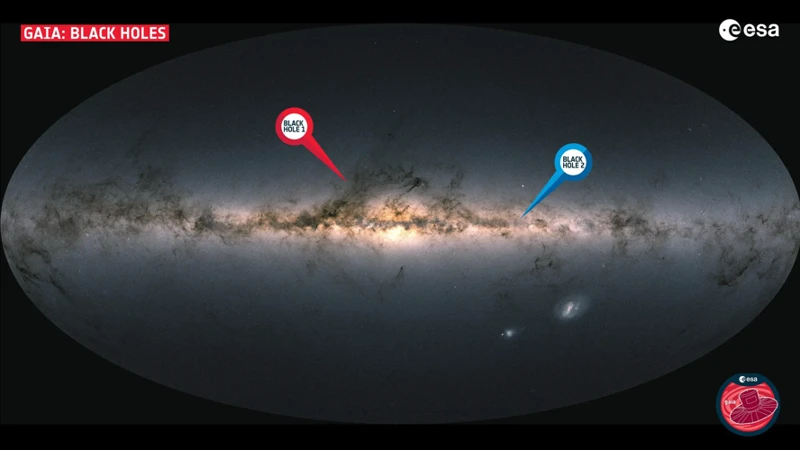
Observing black holes and the cosmic web presents both challenges and opportunities for scientists. To probe the cosmic web, large-scale surveys are conducted to map and study the distribution of galaxies and cosmic filaments. These surveys utilize telescopes and instruments capable of detecting and measuring the faint light emitted by distant galaxies. By analyzing the patterns and clustering of galaxies, scientists can infer the underlying structure of the cosmic web. Additionally, computer simulations play a vital role in understanding the formation and evolution of the cosmic web. On the other hand, detecting and studying black holes require a different approach. Scientists resort to indirect methods, such as observing the gravitational effects black holes have on nearby objects or analyzing the X-ray emissions from accretion disks around supermassive black holes. The recent development of gravitational wave detectors has opened up a new window of observation, allowing scientists to study the mergers of black holes. These multi-faceted approaches provide valuable insights into the nature and behavior of black holes and the cosmic web, unraveling the secrets of the universe’s structure.
1. Probing the Cosmic Web through Large-Scale Surveys
Probing the cosmic web through large-scale surveys is a crucial aspect of studying the structure and evolution of the universe. These surveys involve the systematic observation of vast regions of the sky to map out the distribution of galaxies and their connections within the cosmic web. Astronomers employ various techniques to conduct these surveys, including spectroscopic surveys and photometric surveys.
Spectroscopic surveys utilize spectrographs to measure the wavelengths of light emitted by galaxies. By analyzing the spectra of galaxies, scientists can determine their distances, compositions, and movements, providing valuable information about the cosmic web’s structure and dynamics. Spectroscopic surveys like the Sloan Digital Sky Survey (SDSS) have played a significant role in mapping out the cosmic web on large scales.
Photometric surveys, on the other hand, measure the brightness and colors of galaxies without the detailed spectroscopic information. These surveys cover a broader range of the sky, allowing scientists to observe a larger number of galaxies. The data collected from these surveys are used to create large-scale maps that reveal the distribution of galaxies and the filamentary structure of the cosmic web.
Through these surveys, astronomers gain insights into the cosmic web’s properties, such as the distribution of matter, the clustering of galaxies, and the influence of dark matter. These observations help refine theoretical models and simulations, allowing for a better understanding of the cosmic web’s formation and evolution.
Large-scale surveys also enable the study of the large-scale structure of the universe as a whole. By examining how galaxies are distributed and connected within the cosmic web, scientists can investigate the nature of dark energy, the expansion rate of the universe, and the overall geometry of space.
Large-scale surveys play a pivotal role in probing the cosmic web’s intricacies and unraveling the mysteries of the universe. These surveys provide valuable data that allow scientists to study the distribution of galaxies, the underlying dark matter framework, and the evolution of the cosmic web. By combining observations from these surveys with theoretical models, scientists can gain deeper insights into the structure and evolution of the universe. (source: impact-asteroids-comets-earth-history-article)
2. Detecting and Studying Black Holes
Detecting and studying black holes is a monumental task due to the elusive nature of these mysterious objects. Given that they emit no light of their own, scientists rely on indirect methods to detect and study black holes. One commonly used method is observing the effects of a black hole’s gravitational pull on surrounding matter. As matter is drawn towards a black hole, it heats up and emits radiation such as X-rays, which can be detected by telescopes. This radiation provides valuable information about the presence and properties of the black hole. Another technique involves studying the motion of stars or gas clouds that are in close proximity to a black hole. By observing their erratic movements, scientists can infer the presence of a massive, invisible object—an indication of a black hole’s existence. In recent years, the development of advanced technologies, such as gravitational wave detectors, has opened up new avenues for studying black holes. Gravitational waves are ripples in the fabric of spacetime caused by the acceleration of massive objects, including black holes. By detecting these minuscule ripples, scientists can pinpoint the location and properties of black holes with unprecedented precision. Additionally, astronomers use computer simulations and models to study black holes. These simulations help scientists understand the behavior of matter and energy surrounding black holes, as well as their interactions with the cosmic web. The study of black holes continues to push the boundaries of our understanding of the universe, offering insights into the nature of spacetime, gravity, and the evolution of galaxies. (source: impact-asteroids-comets-earth-history-article)
The Future of Studying Black Holes and the Cosmic Web
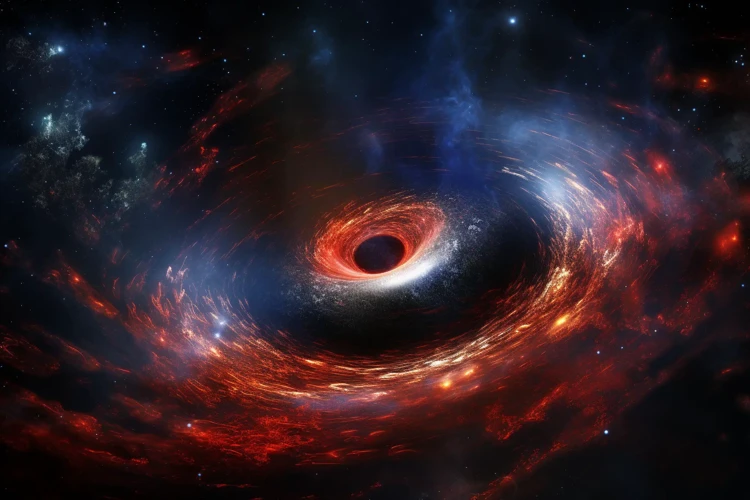
The future of studying black holes and the cosmic web holds great promise for unraveling the mysteries of the universe. As technology advances, scientists are developing new and innovative methods to explore these cosmic phenomena. One exciting avenue is the use of gravitational wave detectors, such as LIGO and Virgo, which have already detected the gravitational waves caused by black hole mergers. These detectors will allow us to study the behavior and properties of black holes with unprecedented precision. Additionally, upcoming telescopes and observatories, such as the James Webb Space Telescope (JWST) and the Square Kilometer Array (SKA), will provide astronomers with even deeper insights into the cosmic web. The JWST will allow us to observe distant galaxies and their interactions within the cosmic web in unprecedented detail, while the SKA will map the distribution of neutral hydrogen, helping us understand the formation and evolution of the cosmic filaments.
Advancements in computational simulations and modeling techniques enable scientists to study the intricate dynamics of black holes within the cosmic web. These simulations allow us to simulate the growth of black holes, their interactions with the surrounding gas and matter, and the resulting effects on the cosmic web. By comparing the results of these simulations with observations, scientists can refine our understanding of the interplay between black holes and the cosmic web.
The future of studying black holes and the cosmic web is filled with exciting possibilities. Through advancements in technology, telescopes, detectors, and simulations, scientists will continue to uncover the mysteries of these enigmatic phenomena. The discoveries to be made in the coming years will undoubtedly shed light on the formation of galaxies, the structure of the universe, and the fundamental forces that shape our cosmic existence. (source: impact-asteroids-comets-earth-history-article)
Conclusion

In conclusion, the study of black holes and the cosmic web has unveiled compelling insights into the structure and evolution of the universe. The cosmic web, with its intricate network of filaments and voids, provides a blueprint for understanding the distribution of matter on a large scale. It is through the cosmic web that galaxies form, interact, and evolve, guided by the forces of gravity and cosmic feedback. Black holes, as the most mysterious objects in the universe, play a significant role in this cosmic dance. Their gravitational influence shapes the structure of the cosmic web, while their accretion of matter and feedback processes affect the growth and evolution of galaxies. Observations and studies of black holes and the cosmic web continue to deepen our knowledge of the universe, shedding light on its origins and complexity. As technology advances and scientific techniques improve, we can look forward to further discoveries and a deeper understanding of these captivating phenomena. The exploration of black holes and the cosmic web not only satisfies our insatiable curiosity about the cosmos but also expands our horizons in unraveling the mysteries of the universe. (source: comet-impact-earth)
Frequently Asked Questions

1. What is the cosmic web made of?
The cosmic web is primarily composed of dark matter, which makes up about 80% of the matter in the universe. It also consists of gas, dust, galaxies, and galaxy clusters.
2. How was the cosmic web formed?
The cosmic web formed through a process called gravitational collapse. Initially, the tiny density fluctuations in the early universe grew over time due to the force of gravity, leading to the formation of the cosmic web structure we observe today.
3. What holds the cosmic web together?
The gravitational force of dark matter is responsible for holding the cosmic web together. Dark matter, though invisible, exerts a powerful gravitational pull on surrounding matter, causing it to clump together and form the intricate filaments and clusters of the cosmic web.
4. Are all galaxies part of the cosmic web?
Yes, the majority of galaxies are part of the cosmic web. They are connected to the web’s filaments and reside within galaxy clusters or along the strands that make up the vast network.
5. What role does the cosmic web play in galaxy formation?
The cosmic web plays a crucial role in galaxy formation. Galaxies form and evolve within the filaments and clusters of the web. The gas within these structures provides the necessary fuel for star formation and the growth of galaxies over time.
6. Can we see the cosmic web?
Directly observing the cosmic web is challenging due to its immense scale and the fact that most of it consists of dark matter and gas. However, astronomers can infer the presence of the cosmic web through large-scale surveys and simulations.
Black holes, particularly supermassive black holes, are found at the centers of galaxies within the cosmic web. They interact with their surrounding environment, influencing the flow of matter and playing a role in the evolution of galaxies.
8. Are black holes found at every intersection of the cosmic web?
No, black holes are not found at every intersection of the cosmic web. They primarily reside in the centers of galaxies, where the density of matter is higher. However, black holes can have an impact on the surrounding cosmic web through their gravitational influence.
9. Can the cosmic web affect cosmic expansion?
Yes, the cosmic web can have an effect on cosmic expansion. The gravitational pull of the dense regions within the web can slow down the expansion of the universe in those regions. However, on a larger scale, the overall expansion of the universe still dominates.
10. What can studying the cosmic web teach us about the universe?
Studying the cosmic web provides insights into the large-scale structure and evolution of the universe. It helps us understand how galaxies form and evolve, how matter is distributed, and how gravity shapes the cosmos. Additionally, exploring the cosmic web allows us to test theories about the nature of dark matter and the growth of structures in the universe.
References
Frequently Asked Questions

1. How do black holes form within the cosmic web?
Black holes form within the cosmic web through the collapse of massive stars. When a star reaches the end of its life, it undergoes a supernova explosion, leaving behind a dense core. If this core has a mass greater than a certain limit, known as the Chandrasekhar limit, it will continue to collapse under its own gravity to form a black hole.
2. What is the gravitational influence of black holes on the cosmic web?
Black holes have a significant gravitational influence on the cosmic web. Their immense mass creates gravitational wells, which attract surrounding matter. This gravitational pull can shape the large-scale structure of the cosmic web by pulling matter towards the regions around black holes.
3. Can black holes impact the formation of galaxies within the cosmic web?
Absolutely! Black holes play a vital role in the formation and evolution of galaxies within the cosmic web. Their gravitational interactions with surrounding matter can trigger the collapse of gas clouds, leading to the formation of new stars and ultimately the growth of galaxies.
4. How can we detect and study black holes?
We detect black holes through various methods, including observing their strong gravitational effects on nearby matter, such as the accretion disks that form around them. Astronomers also search for the X-ray and gamma-ray emissions produced by matter falling into black holes. Additionally, advanced telescopes and observatories, such as the Event Horizon Telescope, allow us to directly image black holes.
5. What are some techniques used to probe the cosmic web through large-scale surveys?
Astronomers use large-scale surveys to map the distribution of galaxies and cosmic structures. Techniques such as redshift surveys, which measure the shifting of light from distant galaxies, are used to trace the cosmic web’s structure. Other methods involve studying the clustering patterns of galaxies and the detection of faint signals from the early universe.
6. What role do supermassive black holes play in the cosmic web?
Supermassive black holes have a profound impact on the cosmic web. They are believed to reside at the centers of most galaxies, including large galaxies within galaxy clusters. Through their accretion of matter and powerful jets of energy, supermassive black holes influence the surrounding cosmic structure and regulate the growth of galaxies.
7. How does the accretion of matter by supermassive black holes contribute to the cosmic web?
When matter falls into supermassive black holes, it forms an accretion disk around the black hole. This process releases enormous amounts of energy, including radiation and powerful jets of particles. These outflows can affect nearby galaxies and the surrounding cosmic web, influencing their growth and shaping their structure.
8. Can studying black holes provide insights into galaxy formation and evolution?
Absolutely! Black holes and their interactions with surrounding matter play a crucial role in galaxy formation and evolution. By studying black holes, scientists can gain insights into the processes of star formation, the growth of galaxies, and the distribution of matter within the cosmic web.
9. What does the future hold for the study of black holes and the cosmic web?
The future of studying black holes and the cosmic web looks promising. Advancements in technology, such as more powerful telescopes and data analysis techniques, will allow scientists to explore these cosmic phenomena in greater detail. Additionally, collaborations between international researchers and the deployment of future space-based observatories will further enhance our understanding of these enigmatic entities.
10. Why are black holes considered the most mysterious objects in the universe?
Black holes are incredibly mysterious because their extreme gravitational pull prevents any form of matter or even light from escaping their grasp. This makes direct observation challenging and requires scientists to rely on indirect methods for studying them. The physics that governs black holes, especially their behavior at the singularity, remains a mystery that scientists are actively trying to unravel.

